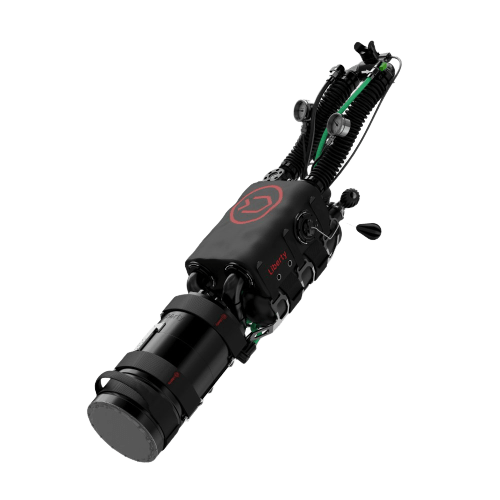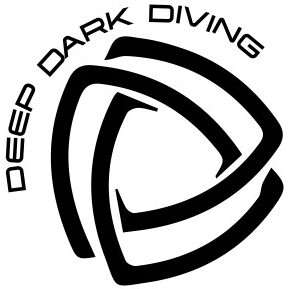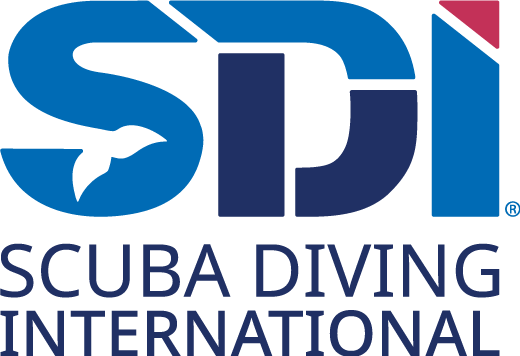Divesoft Liberty Side Mount Rebreather Training
Dive Deeper, Dive Further, Dive Longer
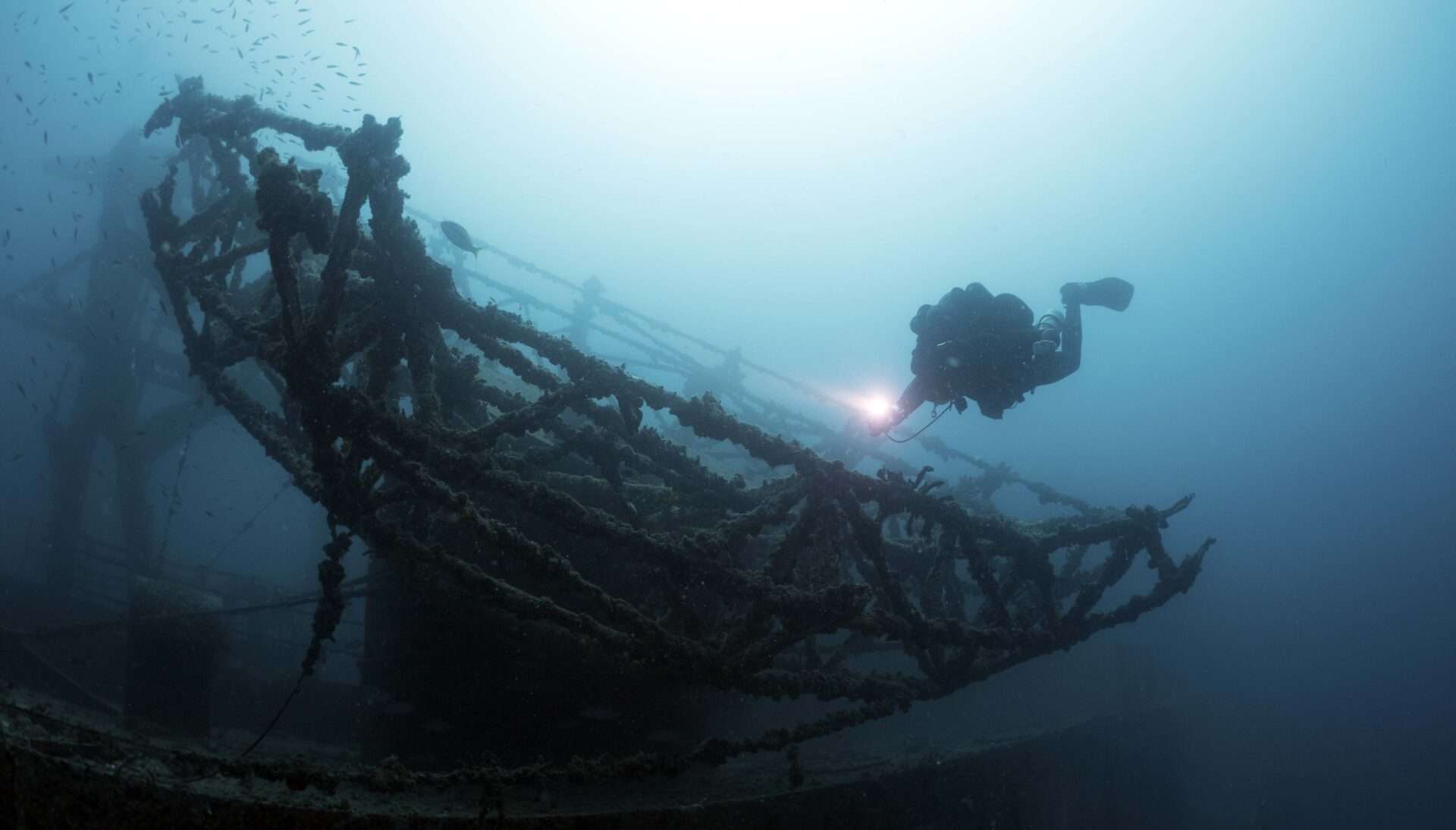
Physics and physiology of diving with gas mixtures containing more than 40 % oxygen. The opportunity to extend your dive time within decompression limits.
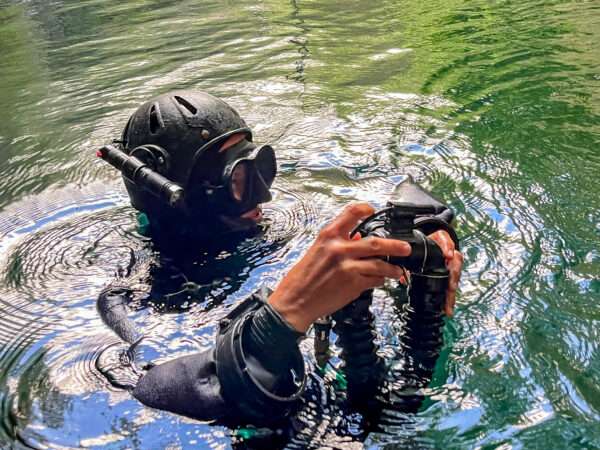
For rebreather divers interested in trying the Liberty or divers in search of the perfect fit.
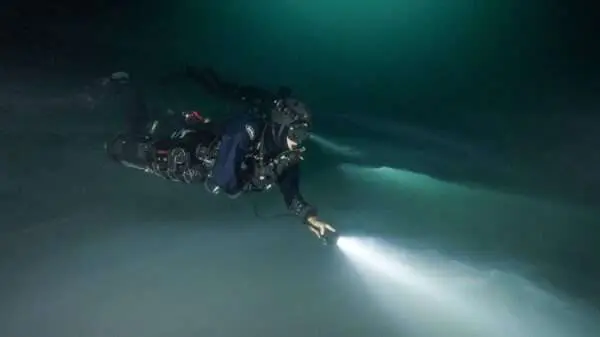
For rebreather divers interested in changing unit or giving a try to the Sidemount Liberty and learn new skills.
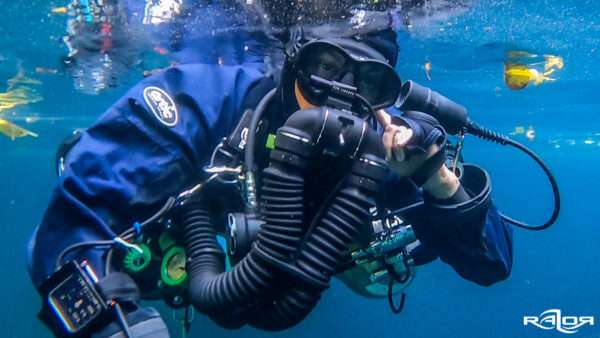
Discover the world of CCR rebreather diving with that Liberty Side Mount CCR – extended dive times – silent and immersive exploration.
Welcome to a journey that will redefine your relationship with the underwater world – the Divesoft Liberty Side Mount CCR (Closed-Circuit Rebreather) training course with TDI. Enjoy extended dive times and a whole new dimension of silent exploration.
Read our blog to know the key criteria to choose your rebreather and know more about Oxygen sensors.
Check out the Divesoft Youtube channel for a detailed introduction of the Liberty rebreather.
Academics: what will you learn during a Rebreather Diver Course
The Evolution of Rebreathers
The course begins by tracing the fascinating evolution of rebreather technology. From the humble beginnings of ancient diving bells to the cutting-edge systems of today, you’ll discover the transformation that has made modern diving not only safer but also more efficient and infinitely more thrilling. You’ll understand the science behind closed-circuit rebreathers, which enable longer dives by recycling exhaled gases, and explore the remarkable features of the Liberty CCR, understanding how its innovative design enhances buoyancy control and dive efficiency.
Gas Management and Physiology
- Physiology of rebreather diving,
- Gas Dynamic
- Nitrogen absorption
- Extended bottom times
- Advanced gas management in CCR diving (setpoints, bailout gases).
Gear Configuration and Setup of the Liberty Side Mount CCR
- Efficient side mount gear configuration
- Assemble and configure the Liberty Rebreather system.
- Streamlined equipment setup.
- Buoyancy control techniques specific to side mount CCR
- Trim
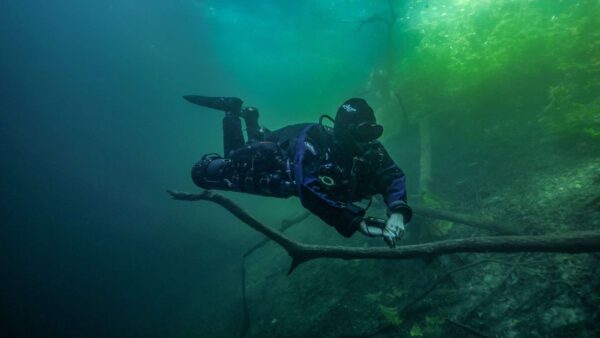


Dive Planning and Safety Protocols of CCR Diving
- Dive planning (calculating dive parameters: depth, time, and gas mixtures
- The Divesoft planning App
- Safety protocols
- Realistic simulations

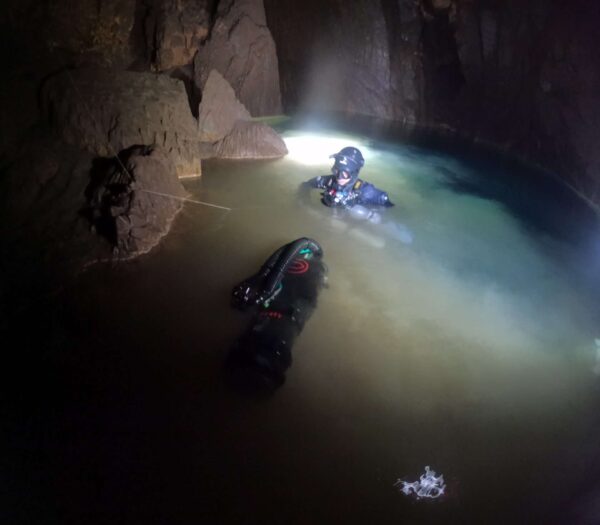
Rebreather Diving Aplplications: Underwater Navigation and Exploration while Rebreather diving
- Enjoy the Liberty CCR’s silent operation.
- Approach marine life without disrupting their habitat, ideal for photographers
- Extended bottom time with less decompression obligations
- Wreck penetration (No bubble impact)
- cave diving,
- deep diving
- enriched air nitrox
The flexibility of the Divesoft Liberty side mount configuration proves its worth in confined spaces.
Where will I dive for CCR Diving Training
Most of your CCR underwater training will occur in the Cenotes, they are not only magical and unique dive sites, there are also lots of advantages in training in the Cenotes.
Some of the sites you may visit to perferct your skills: Cenote Eden, Cenote Angelita, Cenote Orquidea, Cenote Maravilla, Cenote Kin Ha, Cenote Yaakun, Laguna Kan Luum and more…
Become a Divesoft Liberty Side Mount CCR Diver
As you complete the Liberty Side Mount CCR training course – MOD 1 or Crossover with TDI, you’ll be able to join a community of divers who have embraced the future of diving technology. Welcome to a world where silence speaks volumes, and every dive is a symphony of discovery.
ADVANCED NITROX CERTIFICATION
The use of oxygen and oxygen-enriched air mixture is critical to advanced applications in diving. The Advanced Nitrox course will arm you with the knowledge and understanding of the risks and benefits associated with these gases.
The TDI Advanced Nitrox course is an excellent introduction to Technical Diving. You will complete deep dives to 130ft/40m in the safest manner possible with no stage decompression and using Nitrox up to 100% oxygen. You will tune up your buoyancy control in a new configuration and work on stress management and problem-solving. And, very important in technical diving, you will plan your dives.
This TDI Advanced Nitrox certification combines perfectly with the Decompression Procedures course and will be the foundation of your technical diving career and, of course, give you a better understanding of technical diving.
Advantages of the Advanced Nitrox
- Entry-level tech course
- Extend your dive time safely!
- Ideal for scientific divers, photographers, or divers simply wishing to stay underwater longer
- Use a mixture containing up to 100% oxygen.
- There is no need for big configuration changes: only one extra tank
- Hyperoxic mixes significantly increase bottom time at moderate depth.
- Mixes of high Oxygen considerably accelerate decompression.
- Advanced Nitrox training is a Prerequisite to Rebreather diving.
PREREQUISITES
- Minimum age: 18, 15 with parental consent
- Nitrox Diver certification or equivalent
- 25 logged dives
DURATION
- 3 days Minimum
- Number of Dives: 4 minimum
- 100′ bottom time minimum
- Theory: 6 hours minimum + e-learning*
*TDI e-learning at your own pace before the start of your training
QUALIFICATIONS
- Maximum depth of 40 meters/130 feet
- No decompression dives
- Nitrox mixes up to 100% Oxygen
GEAR
- Alternative second stage octopus attached to a primary regulator or a redundant scuba unit; 1.9 litre/13 cu ft minimum.
- SPG.
- Depth gauge and automatic bottom timer and/or dive computer.
- Buoyancy compensator device (BCD) with power inflator.
- Line cutter.
- Exposure suit adequate for the open water environment.
- Cylinder and regulator properly labeled and cleaned as required for EAN mixtures.
- Access to oxygen analyzer, may be supplied by instructor.
WHAT’S INCLUDED
- 4 dives min
- Academics*
- Tanks
- Weights
- Transport to the dive site
- Emergency Oxygen
- Drinking water
NOT INCLUDED
- e-learning
- Pick up
- Cenote entrance fees
- Certification Fee
- Gases >32% (Student and Instructor)
- Equipment
ACADEMICS
- Physics and physiology associated to diving with gas mixes containing more than 40% oxygen
- Gas planning, dive tables, dive computers, oxygen, and nitrogen exposures limitations
- Equipment considerations: cylinder labeling, nitrox mixtures analyzing, gas blending procedures, and oxygen service ratings for gases with more than 40% oxygen
LAND DRILLS
- Review of nitrox skills.
- Correct use of oxygen analyzer including optimal procedure for calibration.
- Pre-dive planning (Limits based on personal gas consumption; Limits based on oxygen exposures at planned depth with actual mix; Limits based on nitrogen absorption at planned depth with actual mix)
- Calculate and log CNS loading for each dive including cumulative exposure
- Gas labeling
- Adherence to conventions regarding prep of equipment for oxygen (O₂) service.
- Program nitrox computer with appropriate oxygen percentage
- Properly execute the planned dive within all predetermined limits.
SKILLS
- Buoyancy
- Swimming techniques
- Awareness
- Team-oriented dive practices
- Free-flowing regulator
- Valves shut down
- Regulator switch
- Safety stops in neutral buoyancy
- Share gas
- Position, trim, streamline
- Stress analysis (personal and other team members)
TRAINING CENOTES
- Cenote Eden,
- Cenote Kukulkan
- Cenote Xtabay
- Cenote Carwash
- Cenote Chikin Ha
- Cenote XTabay,
- Cenote Taj Ma Ha
- Cenote Chac Mool
- and more…
Skills you will perform to become an Advanced Nitrox Diver
Most of your underwater training will occur in the Cenotes. These dive sites are not only magical and unique, but there are also many advantages to training in them. training in the Cenotes.
Where will you train during your Advanced Nitrox course
The theory portion of the Advanced Nitrox course starts with the e-learning at your own pace then conducted in the classroom at Deep Dark Diving and during the briefings and debriefings. Confined water skills are practiced in shallow water in the cenotes such as Cenote Eden, Cenote Orquidea, and execution dives are completed in deep Cenotes, such as Cenote Angelita, Cenote Yaakun, Cenote Maravilla, Cenote Kin Ha.
What’s after your Nitrox Advanced Certification? Why not start your CCR diving journey? Please read our blog for key criteria on how to choose a rebreather.
TDI Rebreather Discovery Program: Try CCR Rebreather Dive on the Divesoft Liberty Sidemount in Mexico’s Cenotes
PREREQUISITES
- Minimum age 18
- 10 logged open water dives for pool/confined water CCR Discovery
- 25 logged open water dives for open water CCR Discovery
- TDI Nitrox Diver or equivalent
DURATION
- 1 days Minimum
- Confined water: 30 min at 6m/20 ft
- Maximum time: well within manufacturer scrubber duration
- Number of Dives: 1 minimum
- Open water at maximum 9 m /30 ft (may be repeated within a week)
- Academic 2 hours minimum
QUALIFICATIONS
- This is not a qualification program. Upon successful completion of this program, a certificate may be issued stating that the diver has participated in a rebreather experience.
GEAR
- TDI approved Rebreather
- Rebreather build list requiered by the manufacturer
- 1 CCR computer or PO2 monitoring device
- Mask and fins
- Appropriate weight
- Oxygen analyzer
- Bailout gas supply
WHAT’S INCLUDED
- 1 confined water dive
- 1 Open water dive
- Academics*
- Fully assembled Unit
- Tanks
- Weights
- Transport to the dive site
- Emergency Oxygen
- Drinking water
NOT INCLUDED
- Pick up
- Cenote entrance fees
- Sorb at market price
- Gases >32% (Student and Instructor)
- Equipment
ACADEMICS
- History and evolution of Rebreathers
- System (Counterlungs, Scrubber, Oxygen, Diluent, mouthpiece, Harness and BCD)
- Breathing gas (Nitrox, PO2 and Dalton’s law, PO2 and setpoint in the rebreather, Oxygen cells, redundancy and voting logic)
- Gas physiology (Oxygen and Nitrogen Limitations, CO2 limitations and scrubber duration, gas consumption and limitations)
- Middle ear oxygen absorption syndrome – Equalization necessary after diving
- Electronics, Calibration
- PO2 monitoring
- Emergency Procedures (BO, Descent & Ascent)
- Diluent addition
- Alarms
- Three H: Hyperoxia, Hypercapnia, Hypoxia
- Flooded Loop
LAND DRILLS
- Pre dive checks
- Leak checks
- Mouthpiece familiarity
- Maintain adequate loop volume
SKILLS
- Monitoring of PO2
- Monitoring of Pressure Gauges
- Descent procedures (BCD and Counterlungs)
- Adding diluent manually
- Understanding ADV
- Swimming and maintaining buoyancy
- Light gurgling
- Maintain adequate loop volume
- Ascending while venting air spaces (lungs, counter lungs, BCD)
TRAINING CENOTES
- Cenote Eden,
- Cenote Kukulkan
- Cenote Xtabay
- Cenote Carwash
- Cenote Chikin Ha
- Cenote XTabay,
- Cenote Taj Ma Ha
- Cenote Xunan Ha
- and more…
Why Try a CCR Rebreather Dive?
Curious about the quiet, bubble-free world of rebreather diving? A CCR (Closed Circuit Rebreather) try dive in the stunning cenotes of Mexico offers you the chance to explore underwater in silence, allowing for closer interactions with marine life and better buoyancy control. This experience is perfect for divers who want to take their skills to the next level or underwater photographers tired of bubbles ruining their perfect shot.
What’s Included in the CCR Try Dive?
Your CCR try dive on the Divesoft Liberty Sidemount rebreather will last about 5-6 hours, including:
- A pre-dive briefing and setup overview
- Learning about how rebreathers work, the scrubber, gases, and monitoring systems
- A hands-on dive where you’ll experience the silent world of CCR diving at a max depth of 6 meters in a Cenote
You’ll also get insights on key safety protocols, including how to manage buoyancy and perform a bailout if necessary.
What’s Next?
If you enjoy the try dive and want to continue your journey into CCR diving, we offer the TDI Mod1 air diluent course, TDI Air Diluent CCR Decompression Procedures Diver and cross over for certified CCR divers. You can choose from backmount or sidemount configurations to suit your diving style.
Experience the Silence and Adventure of CCR Diving
With no bubbles and better buoyancy control, CCR diving opens a whole new underwater experience. Book your rebreather try dive today and explore the cenotes like never before!
Liberty Sidemount CCR Crossover Course
Rebreather units, while based on the same core principles, can differ greatly in their design, gas flow systems, emergency protocols, and other key features. If you’re already a certified TDI Air Diluent CCR Diver or hold an equivalent certification, and you want to qualify on the Liberty Sidemount CCR, our crossover course is designed to meet your needs. This course ensures that you master the specifics of the Liberty Sidemount CCR while adhering to all TDI unit-specific standards and skill requirements.

Liberty Sidemount CCR Crossover Overview
Our Liberty Sidemount CCR Crossover Course is tailored to provide you with in-depth knowledge and underwater experience with the Liberty Sidemount unit. We take advantage of our extensive experience with several CCR units to deliver streamlined training, focusing on consistent emergency responses regardless of the unit.
Our training takes place in the cenotes. With crystal-clear, warm waters with direct ascent possibilities from depths of 30 meters/100 feet, they create ideal conditions for long and intensive training sessions. This setting, combined with our expert guidance, ensures that you develop the necessary skills and confidence to safely operate the Liberty Sidemount CCR.
Liberty Sidemount CCR Crossover Requirements
Most of your underwater training will occur in the Cenotes, they are not only magical and unique dive sites, there are also lots of advantages in training in the Cenotes.
Some of the sites you may visit to perferct your skills: Cenote Eden, Cenote Angelita, Cenote Orquidea, Cenote Maravilla, Cenote Kin Ha, Cenote Yaakun, Laguna Kan Luum and more…
To complete the crossover to the Liberty Sidemount CCR, you must meet the following TDI standards:
Confined Water Training:
- A minimum of 60 minutes in confined water is required.
- Training is conducted at depths not exceeding 9 meters/30 feet.
- This session focuses on getting you familiar with the Liberty Sidemount unit in a controlled environment, ensuring comfort and proficiency before moving to open water.
Open Water Training
- A minimum of 240 minutes of open water training is required.
- This training is completed over at least 4 dives.
- The maximum depth for these dives is 30 meters/100 feet.
- These dives focus on real-world application, allowing you to master the specific skills and techniques required to safely use the Liberty Sidemount CCR.
Academic Session
- The course includes a comprehensive academic session that covers:
- Unit assembly and disassembly
- Hose routing specific to the Liberty Sidemount
- Proper techniques for donning and doffing the unit
- Cleaning and maintenance procedures
- This ensures a thorough understanding of the unit’s operation and maintenance, crucial for safe diving practices.
Emergency Procedures
- The course includes detailed training on critical emergency response actions, including handling internal/external booms, SCR mode, and the “three H’s” (hypercapnia, hypoxia, hyperoxia).
Liberty Sidemount CCR Diver Certification
This course is certified through TDI and takes a minimum of four days to complete. Upon successful completion, you will receive a TDI certification recognizing your proficiency with the Liberty Sidemount CCR.
Frequently Asked Questions about the Liberty Sidemount CCR Crossover
1. What is the duration of the Liberty Sidemount CCR Crossover Course?
The course requires a minimum of four days, depending on your experience and proficiency.
2. Who is eligible for this course?
The course is available to divers with a TDI Air Diluent CCR Diver certification or an equivalent qualification.
3. Can I rent a CCR unit for the course?
Yes, Liberty Sidemount CCR units are available for rent during the course.
4. What kind of training environment can I expect?
You will train in crystal-clear, warm waters with direct ascent possibilities from depths of 30 meters/100 feet, ideal for thorough and intensive training sessions.
5. What certification will I receive?
Upon completion, you will receive a TDI certification for the Liberty Sidemount CCR.
6. What emergency procedures will be covered?
The course covers comprehensive emergency procedures, including managing internal/external booms, SCR mode, and the “three H’s.”
This Liberty Sidemount CCR Crossover Course is your opportunity to advance your diving skills and ensure you’re fully equipped to dive with confidence using the Liberty Sidemount CCR.
Side Mount Liberty CCR Course – MOD 1 Outline
CCR Air Diluent Diver
CCR Air Diluent Decompression Procedures Diver
Become a Divesoft Liberty Side Mount CCR Diver
Liberty Side Mount CCR training course – MOD 1 – TDI will equip you with the knowledge and skills to safely dive your rebreather around the World. Training for CCR diving is only half the journey, join likeminded divers with Level 3 – Liberty Divers Club, a community of Liberty rebreather divers in all configurations. Welcome to the world of silence, where amazing underwater adventures await.
Who is this Liberty Side Mount CCR for?
Becoming a rebreather diver presents an exciting opportunity for certified divers seeking to elevate their diving skills and equipment proficiency. Ideal for underwater photographers, as silent dives enable to engage intimately with marine ecosystems.
Rebreather Diver Course MOD 1 Prerequisites
- Minimum age 18
- Highly Recommended: TDI Advanced Nitrox Diver or equivalent
- Side Mount Diver with a minimum of 20 posts training dive, highly recommended Razor Side Mount Diver
- Deep Dark Diving highly recommends Deco Procedures certification
What you can expect to learn during your Liberty Side Mount CCR Training
During your TDI Liberty Sidemount CCR Air Diluent Diver training, you will take an in-depth look at all of the following and more:
- History and evolution of rebreathers
- Comparison of open circuit (OC), closed circuit, and semi-closed circuit, rebreather (SCR) systems noting the pros and cons of each
- Practical mechanics of the system
- Gas physiology
- Proper scrubber packing: following Divesoft’s recommendation
- Electronic or manual systems design and maintenance
- Dive tables
- Dive computers
- Dive planning
- Emergency procedures
- Dive checklists
- Predive checks
Most of your underwater training will occur in the Cenotes, they are not only magical and unique dive sites, there are also lots of advantages in training in the Cenotes.
Some of the sites you may visit to perferct your skills: Cenote Eden, Cenote Angelita, Cenote Orquidea, Cenote Maravilla, Cenote Kin Ha, Cenote Yaakun, Laguna Kan Luum and more…
Underwater Practice for Side Mount Liberty CCR
CCR Training conditions
- All open water dives must be between 9 metres/30 feet and 30 metres/100 feet
- Two dives must be deeper than 20 metres/50 feet, and one dive must be deeper than 27 metres/90 feet.
- The partial pressure of oxygen (PpO2) is not to exceed the manufacturers’ recommendation or a working limit of 1.3
- All dives are to be completed within CNS percentage limits with a recommended maximum of 80 percent of the total CNS limit.
Rebreather diving skills
Some of the underwater skills you will have to demonstrate include all of the following and more:
- Unit build-up and breakdown.
- Predive checks
- Verify diluent and oxygen contents using an analyzer
- Demonstrate correct predive planning procedures
- Cover emergency procedures
- Use of BCD/dry suit and effective management of loop breathing volume for buoyancy control
- Stop at 13-6 metres/ 10-20 feet on descent for leak/bubble check
- Electronic system monitoring for partial pressure of oxygen levels (set point) and switching set points
- Where the user opts for an automatic diluent valve (ADV) fitted and approved by the manufacturer, additional skills such as regular diluent gauge monitoring and addition control must be emphasized.
- Use of lift bag, or surface marker buoy and reel, where appropriate
- Proper execution of the dive within all pre-determined limits
- Demonstration of safety stops at pre-determined depths
- Constant loop volume management
- Post-dive cleaning of the unit
- Diver maintenance of the unit
Rebreather Diving Qualifications and Limitations
Upon successful completion of the Liberty Side Mount CCR course – MOD 1, Certified Liberty CCR Divers may engage in diving activities utilizing the Rebreather they were trained to dive without direct supervision of the TDI CCR Instructor with the following limits:
- The diving activities approximate those of training
- The areas of activities approximate those of training
- Environmental conditions approximate those of training
- Maximum depth: 30 metres/100 feet
- No decompression dives




